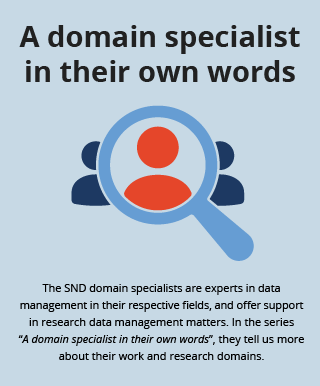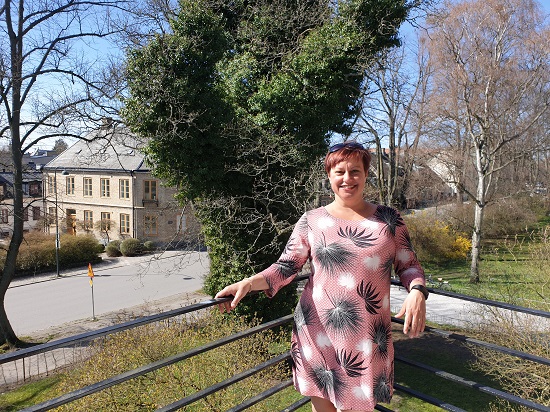Population research is a field that can be particularly challenging in the efforts to make data accessible. That is stated by Anna Axmon, associate professor at Lund University and domain specialist number two in SND’s web series with the SND domain specialists.
—Most of our data are personal data, meaning data that are connected to individuals. This is a problem when we think about open data. We have confidentiality, GDPR, anonymity, and that entire set of issues.
 Anna Axmon is part of the EPI@LUND research group in the Division of Occupational and Environmental Medicine, Lund University, and project manager for LUPOP (Lund University Population Research Platform), a multi-disciplinary infrastructure designed to promote and simplify research based on population studies. Anna’s research builds on collected personal data combined with register data from Statistics Sweden (SCB) and the Swedish National Board of Health and Welfare. In a current research project she investigates whether urban green areas around their places of residence mean that elderly people have higher wellbeing and therefore a lower need for daily assistance, such as home care. In two other projects, Anna studies pregnancies in women with intellectual disability and in women with immigrant backgrounds, respectively. In addition to research and project management, Anna is also a domain specialist for SND.
Anna Axmon is part of the EPI@LUND research group in the Division of Occupational and Environmental Medicine, Lund University, and project manager for LUPOP (Lund University Population Research Platform), a multi-disciplinary infrastructure designed to promote and simplify research based on population studies. Anna’s research builds on collected personal data combined with register data from Statistics Sweden (SCB) and the Swedish National Board of Health and Welfare. In a current research project she investigates whether urban green areas around their places of residence mean that elderly people have higher wellbeing and therefore a lower need for daily assistance, such as home care. In two other projects, Anna studies pregnancies in women with intellectual disability and in women with immigrant backgrounds, respectively. In addition to research and project management, Anna is also a domain specialist for SND.
No tradition of sharing data
—I’m only just beginning to reach out with my work as a domain specialist. At this point, it is simply a matter of information, information, information. Researchers need to know what open data means, how they can make their data more open, and why they should do it. I try to create awareness and make them see the benefits of sharing data with one another. A lot of this ends in the question “What’s in it for me?” says Anna.
Unlike in some other scientific fields, Anna notes that there is no tradition of individual researchers who make their data accessible to other researchers. A big part of this is of course connected to the fact that the data are often personal data which contain sensitive information. But Anna points out that it can also be a question of attitudes.
—I think that our mindset, our attitude, needs to change. My experience is that people want to keep the data to themselves, thinking that they “own their data”. Very many researchers don’t know that the data are actually owned by the university.
Practical help for researchers
Apart from direct information to researchers and better opportunities to anonymise data, Anna thinks that there is another important action that could improve the accessibility to data in population research: to help researchers with the practical work in making data accessible. She gives an example of that type of initiative, which will soon begin in LUPOP and which concerns long-time storage and distribution of population data from Lund University. The idea is that the infrastructure will help researchers with metadata and other measures that are needed to make the data useful for others. LUPOP will also be able to accept requests and make confidentiality reviews when researchers who have found data in, for instance, the SND research data catalogue contact them and want to order the data.

—Population data will never be able to be so open that you can just click a button and download them. It is quite an effort to make data accessible, so I think it’s good if we can make it easier to share data by taking on some of the researchers’ practical work. If you are already sceptical to sharing your data and on top of that need to do a lot of additional work just to share them, you won’t do it. But if it’s easier to make the data accessible, it might be more appealing, says Anna.
Optimistic about the future
Anna Axmon is optimistic about the future. She believes that new methods and tools will be developed, which will make it possible to, for example, share data without risking that individuals are identified. One such method would be so-called “relative anonymity”, which Gustav Nilsonne, coordinator for the SND domain specialists, is involved in investigating.
—For me it's obvious that we need to move towards open data. In population research there are enormous advantages in being able to merge existing datasets, complement them and continue to work with them. We may still have some road ahead of us to get there, but I want to believe that we can convince researchers that this benefits both them, their colleagues, and science as a whole.
